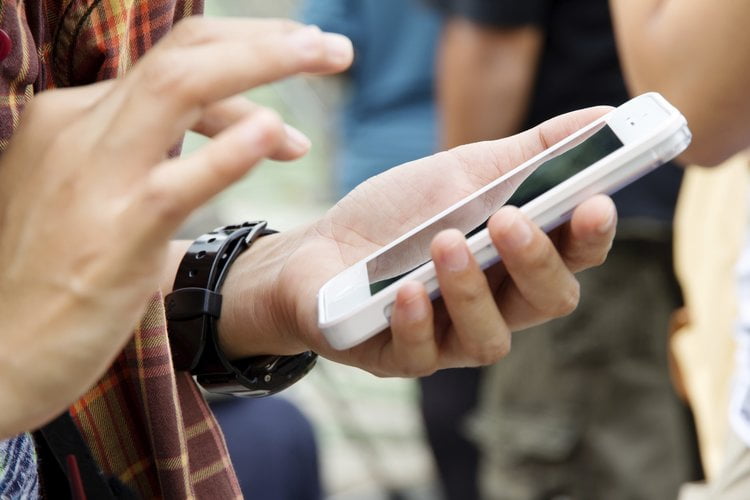
The incidence of diabetes is growing by leaps and bounds, with the U.S. Census Bureau predicting that the population of diabetics will double over the next twelve years, reaching 366 million worldwide by the year 2030. No doubt, chronic states of high blood sugar can destroy your life.
In the United States (alone), over 30.3 million people currently have this disease, and another 84 million are living with prediabetes – which can (if left untreated) lead to a full blown case of diabetes, kidney disease and premature death.
Experts believe that the shocking epidemic of type 2 diabetes is being driven by lifestyle factors, primarily obesity and inactivity. (Type 1 diabetes – which accounts for only 5 to 10 percent of all diabetes – appears to be largely determined by genetics.) But, evidence is accumulating that hypersensitivity to electromagnetic fields can cause high blood sugar, raising the possibility that a third form of the disease – “type 3 diabetes” – could be caused by this form of environmental pollution.
Case studies show that high blood sugar is triggered by exposure to “dirty electricity”
According to peer-reviewed research conducted by Magda Havas, Ph.D., and published in Electromagnetic Biology and Medicine, “dirty electricity,” or transient electrical fields, can affect blood sugar levels in diabetic individuals who are electrically sensitive.
Dr. Havas, an Associate Professor of Environmental and Resource Studies at Trent University, presented case studies showing that plasma glucose levels increased in response to electromagnetic pollution.
In one case, a 57-year-old female with type 2 diabetes – who controlled her diabetes with exercise – found that while 20 minutes of walking in a local mall consistently lowered her blood sugar, walking on an electric treadmill caused her blood sugar to increase. Merely leaving the area of the treadmill for an electrically “clean” environment caused a substantial drop in blood sugar (from 225 mg/dL to 191 mg/dL) to occur in under half an hour.
In another case, a 54-year-old male with prediabetes experienced spikes in blood sugar only when he was near power lines or his computer.
In yet another case, an 80-year-old female with type 1 diabetes required insulin twice a day to control her blood sugar levels. Upon the installation of electrical filters in her home, her blood sugar dropped by a dramatic 33 percent – and her need for insulin was reduced by a remarkable 75 percent.
Dr. Havas noted that people with unexplained rises in blood sugar could potentially be electrosensitive – and, in fact, suffering type 3 diabetes. (With 3 to 35 percent of the population experiencing electrosensitivity, as many as 5 to 60 million diabetics worldwide could be affected by this perplexing and under-diagnosed condition!)
How can I tell if I have type 3 diabetes?
Dr. Havas noted that unexplained spikes or drops in blood sugar – or blood sugar levels that change in different environments – could indicate the presence of type 3 diabetes. Of course, spikes that occur in the presence of electrical fields are a likely clue, as are spikes after working out on electrical equipment.
In fact, electric treadmills are notorious for creating “dirty electricity” – transient electromagnetic fields (EMFs) in the kilohertz range – that Dr. Havas notes they could be used as a diagnostic tool for type 3 diabetes.
If you have symptoms of electrosensitivity or type 3 diabetes, Dr. Havas recommends testing your environment for EM pollution – and sharing the information with your doctor.
Do you have diabetes? Don’t miss this lifesaving video information (below) by Dr. Havas:
(Note: Most conventionally-trained physicians are not aware of type 3 diabetes, as it pertains to Dr. Havas’ definition. And, confusingly, some doctors use the term “type 3 diabetes” to describe gestational diabetes, while still others use it to refer to Alzheimer’s disease).
A deeper understanding about ‘electrosensitivity’
Electrosensitivity (ES), also known as electrical sensitivity, electromagnetic hypersensitivity and cellphone sickness, was originally termed “radio wave sickness.” It was officially identified in the 1970s by Russian doctors to describe an occupational syndrome developed by workers who were exposed to microwave or radiofrequency radiation.
Symptoms occur when an individual is exposed to wireless technologies or electrical devices such as cell phone towers, “smart” meters, WiFi routers, power line magnetic fields, plasma TVs, laptops, cell phones, energy-efficient lighting, fluorescent lighting and dimmer switches.
The symptoms can be mild or severe, and can include headaches, dizziness, heart palpitations, insomnia, memory problems, depression and fatigue. Numbness and tingling, high blood pressure, nosebleeds, tinnitus (ringing in the ears) and shortness of breath can also be indications of electrosensitivity.
Research has shown that about 3 percent of the population has severe forms of electrosensitivity, while up to 35 percent has moderate symptoms.
However, when it comes to recognizing electrosensitivity as an illness, the United States lags behind Sweden, where ES is a recognized disease. (Incidentally, the World Health Organization has classified radiation from cell phones as a Class B carcinogen, the same category in which DDT and lead are placed).
Double-blind studies have shown that electrosensitive individuals experience rapid heartbeat (tachycardia) from cordless phones, while 35 minutes of exposure to digital cell phones has been shown to cause rises in blood pressure. ( In light of these documented effects, it would be somewhat surprising if electromagnetic radiation did not affect blood sugar levels.)
For more information on electrosensitivity, visit: Electrosensitivesociety.com
Action steps: Reduce your exposure to EMFs with these simple techniques
To cut your exposure to harmful EMFs, experts recommend reducing or eliminating the use of cell phones, cordless phones and WiFi. Choose landlines and wired internet connections, and use your laptop or notebook on battery – with an external wired keyboard and mouse.
And, in spite of the item’s name, you shouldn’t work with a laptop on your lap.
Avoiding smart meters, sleeping in an electricity-free bedroom, and eliminating dimmer switches are also wise moves, while installing Graham/Stetzer filters can help you cut down on “dirty electricity.”
The takeaway: if you have been diagnosed with diabetes and are electrosensitive, cutting down on your EMF exposure is a commonsense choice you can make today.
Sources for this article include:
EMFSafetyNetwork.org
MagdaHavas.com
MagdaHavas.com
EMFWise.com
Disclaimer: We at Prepare for Change (PFC) bring you information that is not offered by the mainstream news, and therefore may seem controversial. The opinions, views, statements, and/or information we present are not necessarily promoted, endorsed, espoused, or agreed to by Prepare for Change, its leadership Council, members, those who work with PFC, or those who read its content. However, they are hopefully provocative. Please use discernment! Use logical thinking, your own intuition and your own connection with Source, Spirit and Natural Laws to help you determine what is true and what is not. By sharing information and seeding dialogue, it is our goal to raise consciousness and awareness of higher truths to free us from enslavement of the matrix in this material realm.
 EN
EN FR
FR

























